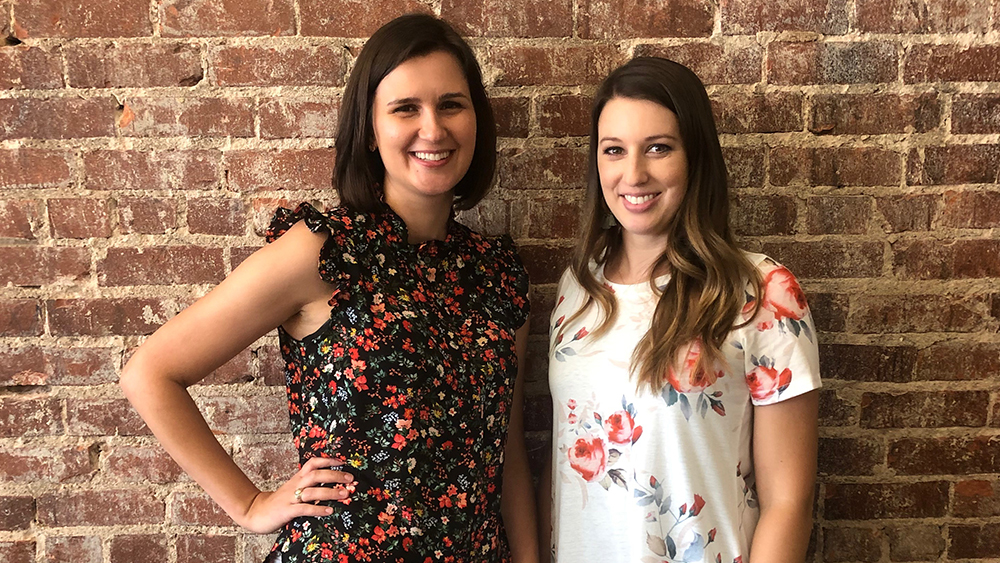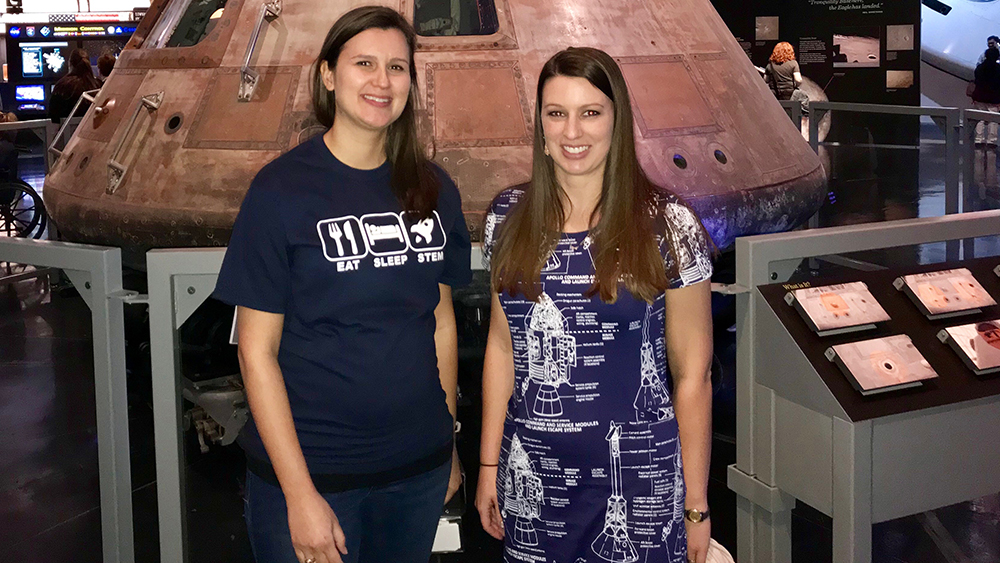
When Natasha Wilkerson and Claire Meschkat met as aerospace engineering undergraduate students at Texas A&M University, they found a shared passion for education and giving back. After graduation and starting careers in industry, that passion brought them back together to form Vivify STEM, a company devoted to providing quality resources for educators in the fields of science, technology, engineering and math (STEM). Now Vivify is teaming up with NASA to promote STEM learning and inspire the next generation of explorers with a NASA Teams Engaging Affiliated Museums and Informal Institutions (TEAM II) grant.
During their time at Texas A&M, the two served as leaders in various campus organizations, hosting outreach events for Engineers’ Week, tutoring and even developing a mentoring program that matched upperclassmen with freshman.
“Our goal has always been to help others from any walk of life to have the opportunity to achieve their dreams like we did,” said Meschkat. “With Vivify and now with the NASA grant, this is possible.”
While working for the Department of Defense, Wilkerson volunteered time tutoring students in local grade schools. She became discouraged by the lack of interest and low skill level the children showed in math and science. She began talking to them about her own engineering work and connecting their math homework to satellites and rockets.
I strongly believe that STEM education is for everyone, regardless if they pursue a degree in engineering.
“The students were fascinated by my stories,” said Wilkerson, “Suddenly a boring math problem became a thrilling adventure when connected to a mission on another planet.” Teachers noticed the change in the students’ attitudes, and they began requesting her curriculum.
With the STEM movement growing in schools, Wilkerson and Meschkat believed they had the perfect curriculum to help teachers bring engineering into the classroom, and Vivify was born. “We wanted to bring engineering to life – to vivify learning for kids of all ages,” said Wilkerson. “Using our personal knowledge in engineering, we wanted to teach kids the connection between what they are learning in their math and science classes and what real-world STEM professionals do.”
Now working as STEM director at Communities in Schools of San Antonio, Wilkerson started “Space Club,” a year-long after-school program for at-risk middle school youths in south San Antonio five years ago. Through Space Club, she has taught over 800 students using Vivify’s Launchpad curriculum to prepare them for STEM pathways. Launchpad transforms students into a team of astronauts on a space adventure where each mission is an engineering design challenge connected to a STEM career.

Wilkerson also runs a citywide Space Colony Competition each spring where 200 middle school students present their design of a city in space to include both engineering and mental health components. The success of the competition and Space Club has garnered attention from other districts in San Antonio and other states looking to replicate the model. Thus began the STEM engagement project “New Worlds Await You: National STEM Challenges for Student Space Exploration,” which was awarded the three-year, $750,000 TEAM II grant from NASA.
Through the New Worlds project, the team at Vivify plans to expand the Space Club model to more districts across the country, specifically targeting at-risk middle school students in sixth, seventh and eighth grades.
The project will roll out in three parts: Meschkat will enhance the Launchpad curriculum through Vivify by partnering with the NASA Johnson Space Center and Southwest Research Institute to align engineering challenges to current space technologies; Wilkerson will leverage the national network of Communities in Schools affiliates to recruit and train staff to implement Launchpad; and Future Cities (part of DiscoverE) will implement a national Lunar City competition with Vivify as an advisor to the content. To mimic the Space Club model, all teams will access Vivify’s Launchpad curriculum as preparation for the competition.
Through the project, they also hope to extend the Launchpad curriculum and Space Colony Competition to cities across the country in a sustainable way that will continue beyond the three years.
Wilkerson and Meschkat see the NASA grant as a way to reach more underserved students, especially low-income, minorities and females. “As a female engineer, I was especially alarmed when visiting other STEM programs to find mostly male students, or the belief that STEM is for a select group of top students,” said Wilkerson. “I strongly believe that STEM education is for everyone, regardless if they pursue a degree in engineering. This grant gives us the means to bring our curriculum and the excitement of STEM directly to these students, and I am so excited to see the results.”